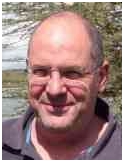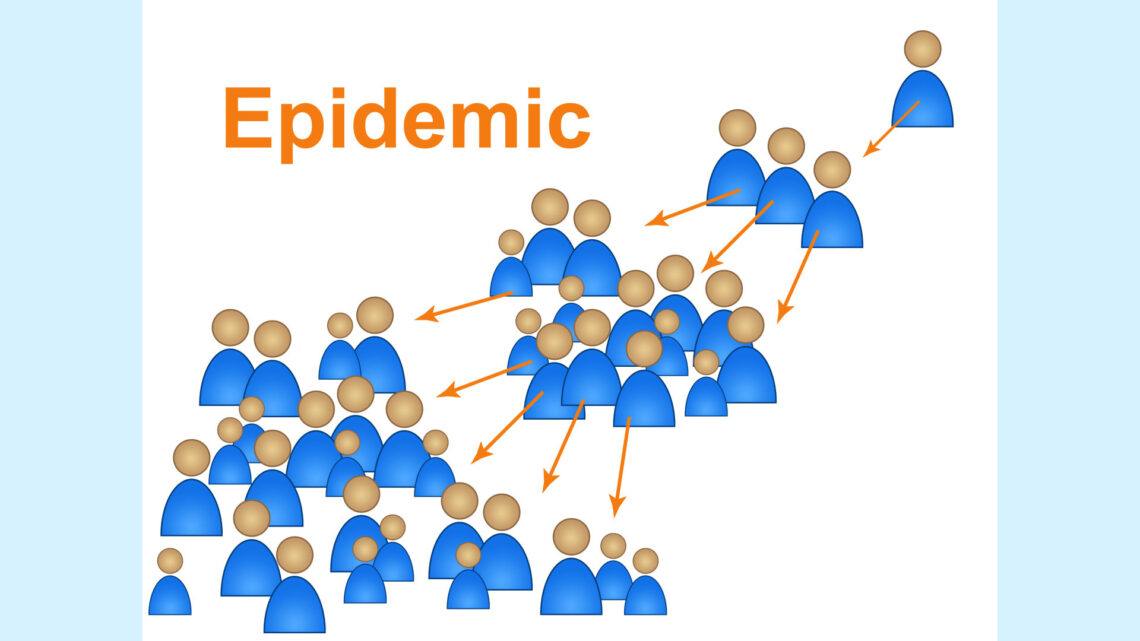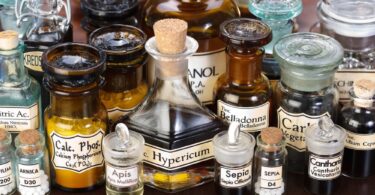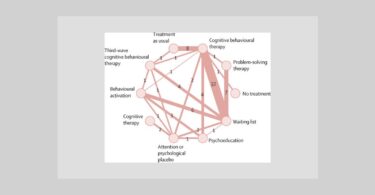
The epidemics came first, my interest in epidemics – because I teach my Dynamis School for Advanced Homeopathic Studies (it’s a post-graduate school) – we go through the whole of homeopathic thinking, philosophy, methodology; and when you reach a certain stage of development in homeopathic thinking, then you reach epidemics.
This is exactly what happened to Hahnemann. First of all, his first lecture, not in homeopathy, his first lecture on medicine was on the human hand when he graduated from the medical school. But then he went on to discover ‘like cures like’, he went on to discover potencies.
He went on to see how to go beyond acute prescribing to more constitutional prescribing; each time going up a level of thinking, going up a level of consciousness, going up a potency of understanding. He finally came, around 1812 or so, 20 to 30 years later, to the understanding of epidemics.
This went together with two things. First of all, the spread of epidemics through Europe, especially with the Napoleonic wars. There were dreadful epidemics of typhus and epidemics of cholera that killed many millions of people. This was happening in the areas where Hahnemann lived, so he had to deal with epidemics practically and he had to evolve his thinking – because you cannot treat thousands of people by taking the individual case each time and prescribing separately. That would just not be effective, not from the point of view of quality and not from the point of view of quantity. Quantity means how do we prescribe for 10,000 people a day. Quality means how do we get to the real source of the epidemic.
Now hand in hand with his development of understanding of epidemics, Hahnemann was doing many provings. He understood that these provings are exactly the same as epidemics, meaning that a proving is really an artificial human-made epidemic.
You do a proving of, let’s say, Diamond; and you have infected everybody with the virus of Diamond. Then there is one collective disease, one collective picture. Now he put these two bodies of knowledge together, epidemics and provings, and he came up with a wonderfully amazing system of treating epidemics which is unique to homeopathy.
Really, if the Nobel Prizes were being dished out at that time or if Hahnemann lived today, of course he should get a Nobel Prize on the ‘like cures like’ and provings and potency; but I also think he should have gotten a separate Nobel Prize for his work on epidemics and the understanding he developed in that area, which was a long work and a big step up in homeopathic understanding.
Basically, it’s going from looking at the individual as an entity to looking at a collective group of people, a large group, as one collective vital force, one organism. Just as for instance, if you were treating a hive of bees and somebody said, ‘Let’s bring out bee number 1,200,050 and let’s take his case; then 1,200,051 and take his case’.
You would be just doing that all day long, and you’d never actually get to understanding the queen and the hive and what it’s all about. So he saw the big picture, and he put it together with his knowledge of provings, and he came to a wonderfully efficient system that brings into account both the collective and the individual; meaning it’s not oblivious to who each person is within the epidemic; but the epidemic comes first – its totality, its centre – and we prescribe for that.
By doing that, you can really really save the lives of so many people. So I really followed Hahnemann’s path as best as I could – by studying the Organon, studying Chronic Disease, studying the epidemics. By doing provings at the same time, I also saw how this knowledge goes together, and I came to the understanding of epidemics.
But I was very eager to see how this works in practice, and I did see this in a few severe flu epidemics and measles epidemics throughout Europe at the time. But I wanted to test how it worked on a much bigger scale, and that’s where AIDS came in.
Of course, I had other reasons to go to AIDS. The first one being that I personally had a wonderful success with AIDS; very many cases of really excellent results with AIDS, beyond my expectations.
I was treating people in the 90s in New York, in London, in Moscow, in Tel Aviv; and I got to see AIDS cases, and I was amazed how well homeopathy worked with them. So I thought, ‘Okay, it’s a large amount of people (28 million was assessed at the time) in Africa suffering from AIDS, and we can’t really ignore it, we have to do what we can.’
So eventually after many years of investigating the scene in Africa, coming and going to Africa to prescribe, seeing very good results as well – my family, my wife (who is a homeopath) was also very keen and my family moved over there.
We treated thousands and thousands of cases. We got very well-versed with the epidemic. The results were amazing. All I can say is that Hahnemann’s theory and practice works exactly right as he said, and it’s extremely effective and it’s working till today.
We have lots of volunteers coming and going, and they learn very quickly how to treat the epidemic. They get amazing results, which is what Hahnemann was saying.
In treating 10,000 people in a day, the trick to really crack the epidemic is to find the genus epidemicus – which means the group of remedies that fits this epidemic, a small group of remedies – and then you can go out and teach it to your physiotherapists and your nurses and your doctors and your priests and your nuns; and they can do amazing work in the field, even in the most remote places. That actually works, it happens, we’ve done it, we’re doing it all the time.
On Working in Africa
The best thing, first of all, is that whereas we went out there, you know, I started going in 2005, and at that time nobody knew what homeopathy was; but today, it’s a household name. Everybody wants to come to homeopaths first. Our clinics are full.
Honestly, I could open another 30 clinics within a month if I had the power to do it, the human power, the resources. As it is, we have 19 clinics running. We’re working in hospitals. The doctors fully cooperate with us. They’re very happy, they send us all the most difficult cases.
I remember one of the happiest days for us was two or three years ago when one doctor came to us in a hospital and he said, ‘You know, I don’t understand it; but since you’ve come, nobody is dying of AIDS anymore.’ This is what we see. You know, we see wonderful results where people are feeling better, their symptoms are gone, their CD4 is up, their viral load is down – way beyond what you might expect from allopathic medicine.
I know exactly what you can get with antiretrovirals. You might get a rise of 100 or 200, 300 points in a CD4; and here with homeopathy, we’re seeing rises of 500, 700, 800 points sometimes; plus all the side effects of the medicine are getting better and all the symptoms are getting better.
So it’s really, I would say, spectacular. Homeopathy works amazingly on AIDS specifically. I think AIDS responds very well because homeopathy stimulates the immune system; and also because we found the genus epidemicus and this works.
It’s really good. So we are very happy with this – the way homeopathy is spreading and the results and our cooperation with the medical teams over there.
Why I went to Africa
I mentioned the reasons that I went out to Africa. I’d say among the ones that I talked about earlier – at the time (2005), homeopathy came under attack, as we all know; and it’s under attack till today by sceptics and by pharmaceuticals.
I thought to myself, ‘Okay, here I am, I’m a warrior for homeopathy. I have a certain amount of power because I teach a lot of people and they support me in what I do. How am I going to handle this battle?’
I could not carry on doing what I was doing – which is TV shows and radio shows and interviews and teaching, etc. That’s good, and there are many good people doing that. But I felt that by going out to Africa and showing what can be done by homeopathy, I could actually bring about a bigger change in defending and promoting homeopathy.
I think the best proof of that was the amount of attacks that I came under in the first few years in Africa. We came under horrendous attacks by sceptics, by the pharmaceuticals. I’m not just talking on the internet; I’m talking about much worse than that.
So, they did not like it at all. I think they were right not to like it because what we have done through media, through research, through people looking at what we’ve been doing – has given people, homeopaths and patients and the communities, hope and inspiration and proof that homeopathy is amazingly powerful in such a severe disease.
I think that has been a good thing for homeopathy. So I think yes, the impact has gone, by far, beyond the African communities. We have lots of followers, lots of support from the community; and part of doing this course is to take this knowledge further, to make people aware of what homeopathy is capable of.
Choosing Our Battles
First of all, we made sure we do not go to war with conventional medicine. That is not our aim. We treat alongside and in a complementary way to conventional medicine, and that’s the message that we put forward. We do not take people off their medication, we do not tell them not to vaccinate, we do not tell them not to go to the doctor – because you have to choose your battles wisely in life.
I’ll give you one example. In one country, I won’t mention which country, the homeopaths sided strongly with the anti-vaccine movement. This cost them dearly because the moment they went against the anti-vaccination, they got attacked much worse; and it really decimated homeopathy in this country.
So although I have my opinions on the subject, I say – let’s work in a different wiser way, choose our battles properly, and just treat people alongside and treat the grassroots. I really think that what will save homeopathy and what will prove and promote homeopathy is in one word, and that is “mothers”.
I strongly believe that mothers are the key to the whole development of homeopathy. Interestingly, I am working now with a group called ‘Mothers for Homeopathy’ in America. That is the idea because mothers do not want to give their kids steroids and antibiotics and other medicines anymore. They’ve seen what happens; and they are the ones who are going to bring their kids and then themselves, and 10 years later maybe even their husbands.
So now, I’ll give you an example of something that’s happening in New York right now. There’s a measles epidemic happening in New York. This measles epidemic is causing huge conflict between the more alternative and the conventional because of the issues of vaccination.
Now this epidemic is an amazing opportunity for us to help people if we treat it properly, and it’s an opportunity to show what homeopathy can do – not by getting up and shouting; but by curing so many people who do not want conventional medicine, who are looking for a different help, and mothers whose children have measles. We have to know how to help.
But unfortunately, homeopaths are on the whole not well-versed with how to treat the epidemics. So for instance with this measles, most people are just giving Morbillinum. It’s not effective, I’ve tried it myself., I’ve seen many people do it. It doesn’t work that well, it’s not the way to treat the epidemic; it’s a primitive way to approach it.
So if we can handle that and learn how to treat this measles, then we can show the world what homeopathy can do through mothers, through families, through grassroots, through community. Afterwards, the research can come to go along with it.
All we have to do is know how to treat these epidemics – because sadly, I’m not happy to make it, but the epidemics are on the increase all over the world. That is the situation. There are many reasons for it. There is global warming, there is global travel, there is resistance to conventional medication. There are many reasons that I go through there that show why epidemics are growing. But the fact is that they are.
It’s well-documented that there are more and more epidemics. We as the homeopathic community have to be ready, have to have the knowledge how to treat this. This is the thing that will help people when other drugs fail them, and this is the thing that will help homeopathy.
SHILPA: So, this is a very important point that you mentioned here is people do not know how to treat epidemics. You know, the first thing people would think of is using the nosode. There are other questions like – are constitutional remedies useful during epidemics to be used alongside or with it, as compared to a genus epidemicus? So, what is the difference between say giving the constitutional and finding the genus?
The Constitutional Remedy vs the Genus Epidemicus
Let’s start with the constitutional opposite, the genus epidemicus. When you study epidemics, one thing you have to know about epidemics is by nature, they are acute diseases. Acute means fast, with a prodrome and a crisis and a resolution.
That resolution will be by death or recovery – meaning if there’s an epidemic of cholera or some severe epidemic, people can die even within 24 hours. In the big epidemic flu of 1918, the Spanish Flu, it attacked young people the worst, young strong people for some reason; you know the 24-year-olds or the 18, the 30-year-olds were attacked the most. Within 24 to 48 hours, they could be dead.
So, this is what I mean by acute disease. Measles is an acute disease; cholera is an acute disease. Now a constitutional is not an acute disease, it’s a chronic disease based on miasms; and it’s totally opposite to acute disease.
I know there’s a trend of people that think constitutional and acute is the same and the same remedy; it’s absolutely not. Acute and constitutional chronic disease are totally opposite to each other. All you have to do is read paragraph 72 of the Organon. This is a really important paragraph. I go into great length in teaching it, and it shows that acutes are not only opposite but are inverse to the chronic.
It’s the opposite situation. So let’s say you’re growing your tomatoes and they are suddenly attacked by a fly, and this fly is killing your tomatoes very rapidly that you’ve worked on and loved and grown in your back garden. Let’s say you’ve got your nice little garden and you’re growing tomatoes, and they are suddenly attacked by a fly or a worm or something like that; and within two days, they’re all starting to die.
Now, you can find a remedy for that. You can give them whatever it is, that you’re going to give, some acute remedy according to the symptoms that you see that they are wilting and dying and thirsty and yellow. That is treating acutely and promptly.
Or you can say, ‘No, I will give my tomatoes more manure, I will take out the weeds, I will play them lovely music; and they will become stronger and they’ll get over the acute disease.’ That’s just not going to happen – because it’s good for the constitution, but it’s not good during a fight; an acute disease is actually a fight.
I’ll give you another example. Somebody walks in the street, and they get attacked by a drunk person. It’s actually a fight with fists and knives, and a severe situation that is going to be finished in two minutes – you know, this fight – with death or recovery or injury.
You say, ‘No, no, no. Let’s stop the fight. This poor alcoholic guy who is attacking me must have had a difficult childhood, he must have had difficult problems and obstacles during his life. Let’s talk to him, let’s bring the psychologist, and let’s go over the case and give a constitutional remedy.’ By the time you’re thinking that, that’s the end of the fight because you’re dead.
You cannot mix the two of these. Acute disease is a fight, it’s a fight against the pathogen; and it’s a quick hard fight very often because these acute diseases – cholera, the Spanish flu, measles, whatever it is, AIDS – they can kill, and they do kill.
There have been epidemics where 100 million people were killed during five years. That’s about 10,000 people a day. Epidemics totally killed huge parts of Europe, South America, North America; this is very common and very quick. So we cannot start doing constitutional at the time, and you won’t even have time to do constitutional.
Now what about the nosode? Well, the nosode might be a little bit effective in some cases; some more, some less. But basically, it’s an allopathic thinking. It’s very close to thinking about vaccination; there’s not much difference. As homeopaths, we work with the totality of symptoms; and this will change from epidemic to epidemic.
If you are using a nosode, you’re using the nosode from maybe 30, 40, 100 years ago – which is totally different to the disease that you have before you. That disease has mutated, changed; that virus has changed, the circumstances are different, it’s a very different disease to what it used to be.
This is something that Hahnemann emphasizes strongly in his teaching. You read paragraph 100 – where he says every epidemic has to be seen as something totally new and unique. He says this is essential for success in epidemics. So using the nosode, I’m sorry to say, is a very low and ineffective level of homeopathy.
AIDS in the West and in Africa
I am looking for the genus epidemicus of AIDS in East Africa because there are different strains and maybe the AIDS is different.’ So I did not want to go around saying that this genus epidemicus of AIDS in East Africa is going to be the same for Europe or for the States or for Australia.
However, I’ve found to my surprise – because I do treat a lot of AIDS cases in Israel, in London, in the States, in Moscow and Russia – that actually, it’s the same remedies. So it surprised me, but I have found that a lot of remedies of the genus have actually worked very well in global AIDS.
Cam AIDS be Cured?
Basically the question is – can AIDS be cured? This is something I faced early on because people were saying, ‘Well, can you cure AIDS?’ What happens is with AIDS in particular, there’s actually no real good definition to say is AIDS cured.
Why is that? Because you have the virus in the blood, and there’s a viral load test; maybe you’ve got a test of 2,000 or 10,000 or 100,000 or 200,000 amount of virus per cubic millimetre, and that determines that you have AIDS.
Now at a certain stage, that virus can vanish – meaning that there is no virus detected, it’s undetected in the test. But then their verdict is that the virus is just hiding in the liver, in the bone marrow, in the spleen; and that it’s still there, but it’s just buried itself away.
Then you can have a CD4 of a person and you can say, ‘Well, it’s gone up to healthy levels’; but that’s not enough to prove a person doesn’t have AIDS. So, I do not know of any definition that can say this AIDS is cured.
But for us as homeopaths, that doesn’t matter because what you see is this – and this is something I’ve seen in over 7,000 or 8,000 cases of AIDS that we’ve treated there – and that is, the symptoms go away, they go away for a long, long time; they are trouble free. The side effects of conventional treatment that we never stop, we never take people off conventional drugs, the side effects are totally gone; and since I saw these people the first time in 2005 or 2006, they are still alive, thriving and working (with good levels of CD4).
So, I don’t want to come and say this is a cure for AIDS. I’m not even interested in doing that because like I said before, to go around shouting you can cure AIDS is silly and counterproductive. All I’m saying is we help so much that it’s magic. Quality of life changes completely, by 100% . The results, I have to say, are much better than conventional medicine. Look, we did research there with people who are subject to treatment failure. Treatment failure means they are no longer responding to the antiretrovirals and the CD4 is dropping, their weight is dropping, they’re not doing well.
With homeopathy, we have them thriving and living well till today. The people vote with their feet because, you know, we work in a hospital for instance that has an AIDS department; and every person that comes there comes to see us out of their own choice. They know.
Jeremy’s Course on Treating Epidemics
It’s definitely not only about AIDS. I’m doing this course, the 10-year celebration, because I promised myself that once I have a good genus that is solid and I feel confident about it, I will give that to the homeopathic community.
You know, people have written books on homeopathy and AIDS after seeing two or three or five or no cases at all. I said to myself, ‘I am not going to reach any conclusion until I’ve seen 3,000 cases’, which I have.
Then I promised myself I’ll make this knowledge available, and that is what this course is about, in a way. It’s a celebration for me of the 10 years. This course has taken me a lot of work; it’s probably a year of work to make this course because I try to produce very high-quality videos that are enjoyable and instructive.
But it’s a course that is primarily about epidemics in general. So you might not see a case of AIDS or not be interested in AIDS or it might not be an issue, that doesn’t matter. The AIDS here is just one example of how to treat epidemics as a whole.
You might be encountering the measles epidemic now, cholera, whooping cough or any other of the many epidemics, the Zika ( Homeopathy Treatment for Zika Fever) and other disease, Nile fever, Yellow Nile fever, and lots of other epidemics that are around.
It’s the same knowledge. Once you see how I’ve done it with AIDS, once I teach you the theory and practice of treating epidemics, you should be ready to face everything. So, it’s not a specific course about AIDS. That is just one incidence that I’m using as an example.
JEREMY’S COURSE: Jeremy’s Blueprint for Managing Epidemics and the Genus Epidemicus of AIDS It’s available from: www.dynamis.edu
Finding the Genus Epidemicus
There are several methods of approaching epidemics, and Hahnemann teaches these different methods; but basically, you have to look at it ‘as if one person’. You have to know how to take the symptoms, and you have to know how to put them together in order to find the genus epidemicus. It’s not just a matter of throwing them all into the repertory and seeing what comes up first and second and third. There’s more to it.
So most people that I’ve seen treating epidemics just say, ‘What remedy worked for you?’, ‘What remedy worked for you?’, ‘What did you give in this case?’, ‘What did you give in that case?’ But have to see a large number of people and put these symptoms together and put it together in a particular way to find the remedies that are most effective for this epidemic.
It takes a bit of knowledge and practice; and a group of people working together will make it much better. But it’s very doable once you have the techniques. In this course I’m teaching a few new techniques that I gained in my work with AIDS in Africa – how to repertorise it, how to repertorise it more quickly, how to communicate, how to put together the symptoms, how to look at the totality of ‘as if one person’ in the epidemic.
I do give a few good examples in this course of, for instance, flu and measles epidemics that I treated in the past and how I went about them. What I can say, what I observed is often not what you expect.
You think you have a flu epidemic, you want to use Bryonia and Gelsemium and Aconite. It often, if you put it all together, will come out a different remedy; totally something that you would not have thought of. So, this can only be found in this way by taking the epidemic as a group and doing it in a proper way.
I very much hope that by doing this course, people will be better equipped to treat those flus and to treat those measles epidemics and all the other things that are happening. We have to follow Hahnemann on this, and he developed it into a well-honed system. It’s all there. I’ve just added my experience, but I put it all together in a way that I hope is very easy to understand.
JEREMY’S COURSE: Jeremy’s Blueprint for Managing Epidemics and the Genus Epidemicus of AIDS It’s available from: www.dynamis.edu







Every homeopath should do Jeremy’s course! It is absolutely fantastic… essential for understanding epidemics, and so much more.